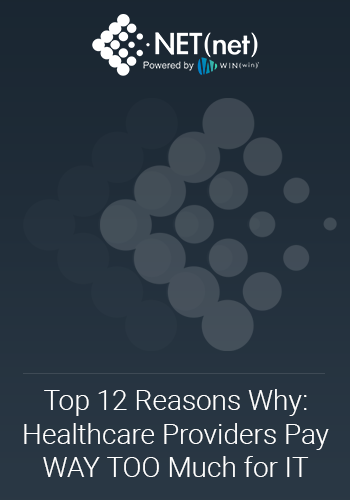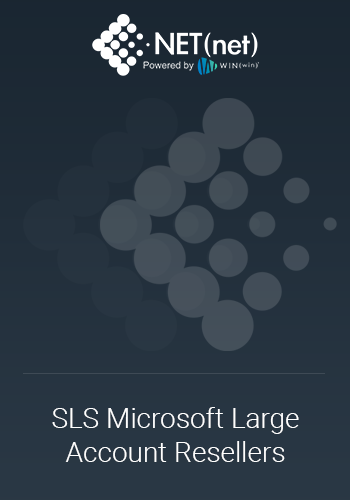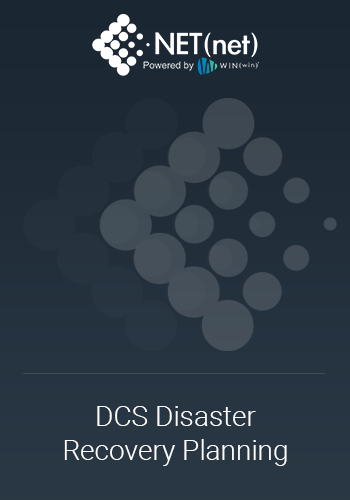Preface
Thank you for joining us for Part 2 of this 3-Part series on Cloud Costs. Please reference the following 3 blogs to get the complete 2023 Cloud Cost Series:
- Part 1: Feb 15: Top 5 Price Shock Phenomena of Cloud
- Part 2: Mar 15: Top 5 Workloads that are NOT Well Suited for the Cloud
- Part 3: Apr 15: Top 5 Reasons Why Clients Are Repatriating Workloads
Part 2: Top 5 Workloads NOT Well Suited for The Cloud
Introduction
Since the mid-2000s, clients have been migrating workloads to the cloud with increasing frequency, but recently, we have seen clients start to repatriate previously migrated workloads back on-premises, due in no small part to the price-shock phenomena discussed in Part 1 of this series. In many cases, the causes of price-shock can be traced back to workloads that are not well suited for the cloud due to their characteristics which are often resource-intensive. In Part 2 of our 3-Part series on cloud costs, we discuss the Top 5 Workloads that are NOT well suited for the cloud.
Trailblazing SaaS (Software-as-a-Service) suppliers such as:
- Salesforce.com
- Workday
- ServiceNow
- NetSuite
They have become titans of the industry as major applications (CRM, HCM, & ERP) have migrated to the cloud largely because of product innovation, modern user interfaces, cutting-edge delivery mechanisms, and flexible ‘pay-as-you-grow' commercial models. This has resulted in massive customer adoptions and huge migrations of enterprise applications away from on-premises customer data centers to the cloud.
Similarly, pioneering suppliers such as:
- Amazon (AWS)
- Microsoft (Azure)
- Google (GCP)
...have led a revolution of sorts for IaaS (Infrastructure-as-a-Service) where customers have migrated more workloads to the cloud, largely with excellent results due to its consumption-based rather than capital-intensive resource utilization model. This has been especially great for workloads that are elastic in nature or where customers need a lot of computing power for short periods of time. As a result, clients have been migrating workloads to the cloud with increasing intensity and frequency since the mid-2000s.
However, while there are certainly great cloud solutions for many client workloads, there are some workloads that are either not well suited for the cloud or have yet to be effectively migrated to public cloud platforms.
Some of these challenges have been exacerbated by suppliers like:
- Box
- Databricks
- DocuSign
- Dropbox
- Hubspot
- Shopify
- Snowflake
- Twilio
- Zendesk
- Zoom
These sell ‘over-the-top' (OTT) cloud-based services and applications that run on top of existing cloud infrastructure and consume underlying cloud-based resources in often surprising levels of consumption, resulting in charges that often shock customers into reconsidering cloud deployments for certain types of workloads.
The halcyon age of cloud computing has recently shown some signs of distress, and the resulting Price Shock Phenomena we discussed in Part 1 often result from the 5 types of workloads that are not well suited to be migrated to the cloud:
Here are the Top 5 Workloads NOT Well Suited for the Cloud:
1.) Performance-Centric Workloads (those with high-performance computing (HPC) demands for real-time data processing and heavy computational power with low-latency communication requirements between nodes) are not well suited for cloud environments for several reasons:
- Network Latency: The cloud relies on internet connectivity to transfer data to and from remote servers, which can introduce network latency. For performance-centric workloads that require high-speed and/or high-volume data transfers and low-latency communication between nodes, this can significantly impact performance.
- Resource Sharing: Cloud providers typically share resources among multiple customers, which can lead to unpredictable performance spikes and resource contention. This can result in inconsistent performance, particularly for performance-critical workloads.
- Limited Customization: Cloud providers typically offer preconfigured virtual machines and container images optimized for general-purpose workloads. However, for performance-centric workloads that require specific hardware configurations or low-level optimizations, this can limit the ability to customize the underlying infrastructure.
- Cost: Performance-centric workloads can require significant compute, storage, and network resources, which can quickly add up in cloud environments. This can make cloud deployments expensive, particularly for long-running or resource-intensive workloads.
2.) Data-Intensive Workloads. Applications that require large amounts of data transfer, and/or storage are not well suited for the cloud for several reasons:
- Processing Power: Some data-intensive workloads, such as machine learning (ML) and analytics, require significant compute resources to process large data sets. While cloud providers offer powerful compute instances, the cost of these instances can quickly become prohibitive, particularly when running workloads at scale.
- Storage Costs: While cloud storage can be relatively inexpensive, the costs can quickly add up when working with large data sets. (i) Some cloud providers charge for accessing data stored in specialized storage tiers or for accessing data from different regions or availability zones. (ii) Pro Tip: To mitigate these costs, client organizations may consider using data compression or deduplication techniques to reduce the amount of data that needs to be transferred or using cloud storage services with lower data transfer costs.
- Data Gravity: Data-intensive workloads tend to generate large amounts of data that are often best analyzed and processed close to where they are generated. This can be difficult to achieve in the cloud, particularly if the data is generated on-premises or in a different cloud region. Data Transfer: In addition, cloud providers typically charge for data egress, which is the transfer of data from the cloud to external systems or networks. This can be costly for data-intensive workloads that involve transferring large amounts of data between cloud and on-premises systems or between different cloud regions. (i) For example, a company that needs to process and analyze a large amount of data may need to move that data from an on-premises data center to the cloud for processing. The cost of transferring the data to the cloud can quickly add up, particularly if the data is stored in a different geographic region than the cloud processing resources. (ii) Pro Tip: Client organizations may choose to keep data-intensive workloads on-premises or use a hybrid cloud approach to keep data closer to where it is generated and processed.
3.) Compliance-Driven Regulatory Workloads such as those seen in the financial services and/or healthcare industries are generally subject to strict regulations & guidelines, and therefore, their requirements can sometimes not be easily met by a public cloud provider often making them unsuitable for the cloud. While cloud computing can offer many benefits, such as scalability, cost-effectiveness, and flexibility, it may not always be the best option for compliance-driven regulatory workloads. Here are some reasons why:
- Data security: Compliance-driven regulatory workloads often require high levels of data security, and some client organizations may be concerned about the security of their data in a cloud environment. Although cloud providers offer robust security measures, such as encryption, firewalls, and access controls, some organizations may feel more comfortable with keeping their data on-premises, where they can have full control over security.
- Compliance requirements: Compliance requirements can vary by industry and region, and some cloud providers may not be able to meet all of the specific requirements of a particular organization. Compliance regulations often require companies to maintain detailed records of data access, audit logs, and other compliance-related information. If a cloud provider cannot meet these requirements, it may not be a suitable option for compliance-driven regulatory workloads.
- Data sovereignty: Compliance regulations in some countries require that data be stored within that country's borders. Cloud providers may have data centers located in different regions or countries, which can make it difficult for organizations to comply with these regulations.
4.) Legacy Applications with workloads that were designed to run on specific hardware or operating systems may not be supported by cloud providers. In some cases, it may be difficult or costly to modify these applications to run effectively in the cloud, and it may be more practical to keep them running on-premises. Some legacy applications may not be well suited for cloud environments due to:
- Compatibility Issues: Many legacy applications were designed and developed for on-premises infrastructure and are not designed to run in a cloud environment. This can lead to compatibility issues when trying to migrate these applications to the cloud.
- Complexity: Legacy applications can be highly complex, with large codebases and dependencies on older technologies that may not be compatible with modern cloud platforms. This can make it difficult to modernize or refactor these applications to run in the cloud.
- Security: Legacy applications may not have been designed with modern security standards in mind. This can create security vulnerabilities when running these applications in the cloud, where they are exposed to new security threats.
- Licensing Restrictions: Licensing limitations can be one of the reasons why legacy applications may not make good candidates for cloud migrations. Many legacy applications have licensing agreements that may not allow them to be run in a cloud environment or limit the number of virtual machines or processors that can be used. (i) for example, some software vendors may require organizations to purchase separate licenses for each virtual machine or processor used in the cloud environment. This can make it prohibitively expensive to migrate legacy applications to the cloud, especially for organizations that have complex or resource-intensive applications. (ii) In addition to licensing limitations, legacy applications may also have other restrictions that make them difficult to migrate to the cloud, such as proprietary hardware dependencies, limited interoperability with modern systems, and data storage and management issues. Therefore, it is essential for organizations considering cloud migration of legacy applications to carefully evaluate the licensing requirements and restrictions of the applications and work with their software vendors to ensure that they are compliant with licensing agreements and can migrate the applications to the cloud in a cost-effective manner.
5.) Dynamic Workloads with highly variable and/or unpredictable resource consumption requirements can be difficult to performance manage and/or cost optimize in a cloud environment. These workloads can vary in their resource requirements, performance characteristics, and usage patterns, making it difficult to determine the appropriate level of resources needed to support them.
- Performance Management: Dynamic workloads require varying amounts of computing resources at different times. In a cloud environment, this can be challenging to manage, as it requires the provider to allocate and de-allocate resources on demand. This can lead to performance issues if the provider does not have enough resources available to meet the workload's needs. Dynamic workloads also often generate large amounts of network traffic, which can strain a cloud provider's network infrastructure. This can lead to network congestion, reduced performance, and increased costs.
- Cost Optimization: Dynamic workloads can be expensive to run in the cloud because they require a high level of resource flexibility. Cloud providers typically charge for resource usage on an hourly or per-minute basis, which can make it challenging to predict and manage costs. In addition, dynamic workloads often generate large amounts of data that need to be stored and processed. This can be challenging in a cloud environment, where data storage and processing costs can quickly add up quickly, making it cost prohibitive.
Final Word
It is important to note that while these Top 5 types of workloads may not be well suited for the cloud in certain circumstances, cloud providers are continually improving their infrastructure and services to better support a wider range of workloads. Additionally, organizations may choose to use a hybrid cloud approach, which combines on-premises infrastructure with cloud services, to achieve what is often viewed as ‘the best of both worlds’.
Stay Tuned
The Price Shock Phenomena of Part 1 often results from workloads like the ones identified above that are not well suited for the cloud. Hopefully, you enjoyed this post detailing the Top 5 Workloads that are NOT well suited for the cloud. We hope you stay tuned for Part 3 in our 3-part series: Top 5 Reasons Why Clients Are Repatriating Workloads coming April 15.
Summary
Wholesale cloud migrations combined with a lack of adequate governance has often led to unrestrained resource consumption. This has enabled cloud costs to get completely out of control for many AWS, Azure, and Google customers, forcing them to consider repatriating workloads back on-premises; yet NET(net) clients routinely save 13-53% on their cloud costs even without forced repatriation.
Think your Costs are Optimized?
If you think your cloud costs are already optimized, you should suspend your disbelief and test your theory by Price-Benchmarking your public cloud costs right now. You might be surprised to see how much you could save.
Think Beyond Cloud Migrations
These tips will certainly help you save money on your cloud costs, but they won’t answer the more interesting questions about whether you should migrate workloads, modernize applications, democratize cloud providers, develop a hybrid cloud strategy, or repatriate workloads back on premises; among other more advanced considerations.
Don’t Need Help? You are the Expert on How to Achieve Cloud Savings?
Okay fine, but just in case you want a refresher on industry best practices, you may want to consider downloading our free eBook: The Top 12 Tips to Save on Cloud Costs. These tips will certainly help you save money on your cloud costs, but like we said above, they will not answer the more interesting questions about whether you should migrate workloads, modernize applications, democratize cloud infrastructure providers, or repatriate workloads back on premises; among other more advanced considerations.
Maybe you do Need Help After All?
If you want help, you can:
- Contact Us to determine how we can help you save money and/or improve value
- Engage us for a one-time Cloud Cost Audit (CCA). We will analyze your custom workloads, and make recommendations on how best to optimize the configuration settings of your cloud solution and savings plan to help you minimize your costs. Clients that sign up for a Cloud Cost Audit (CCA), routinely see cost savings of 13-33%.
- Sign up for a Savings Subscription for Cloud Cost Optimization (CCO) and we will get started right away helping you minimize cost and risk of your ongoing cloud costs while maximizing the realization of value and benefit you receive. Clients that sign up for ongoing Cloud Cost Optimization (CCO) services routinely see cost savings of 33-53%.
About NET(net)
Founded in 2002, NET(net) is the world’s leading IT Investment Optimization firm, helping clients find, get, and keep more economic and strategic value in their technology supply chains. Over the last 20 years, NET(net) has influenced trillions of investment, captured hundreds of billions of value, and has helped clients cost and value optimize XaaS, Cloud, Hardware, Software, Services, Healthcare, Outsourcing, Infrastructure, Telecommunications, and other areas of IT spend. NET(net) has the experience you want, the expertise you need, and delivers the performance you demand and deserve. Contact us at info@netnetweb.com, visit us online at www.netnetweb.com, or call us at +1 (616) 546-3100 to see if we can help you capture more value in your IT investments, agreements, deployments, and relationships.
NET(net)’s Website/Blogs/Articles and other content is subject to NET(net)’s legal terms, offered for general information purposes only, and while NET(net) may offer views and opinions regarding the subject matter, such views and opinions are not intended to malign or disparage any other company or other individual or group.

















